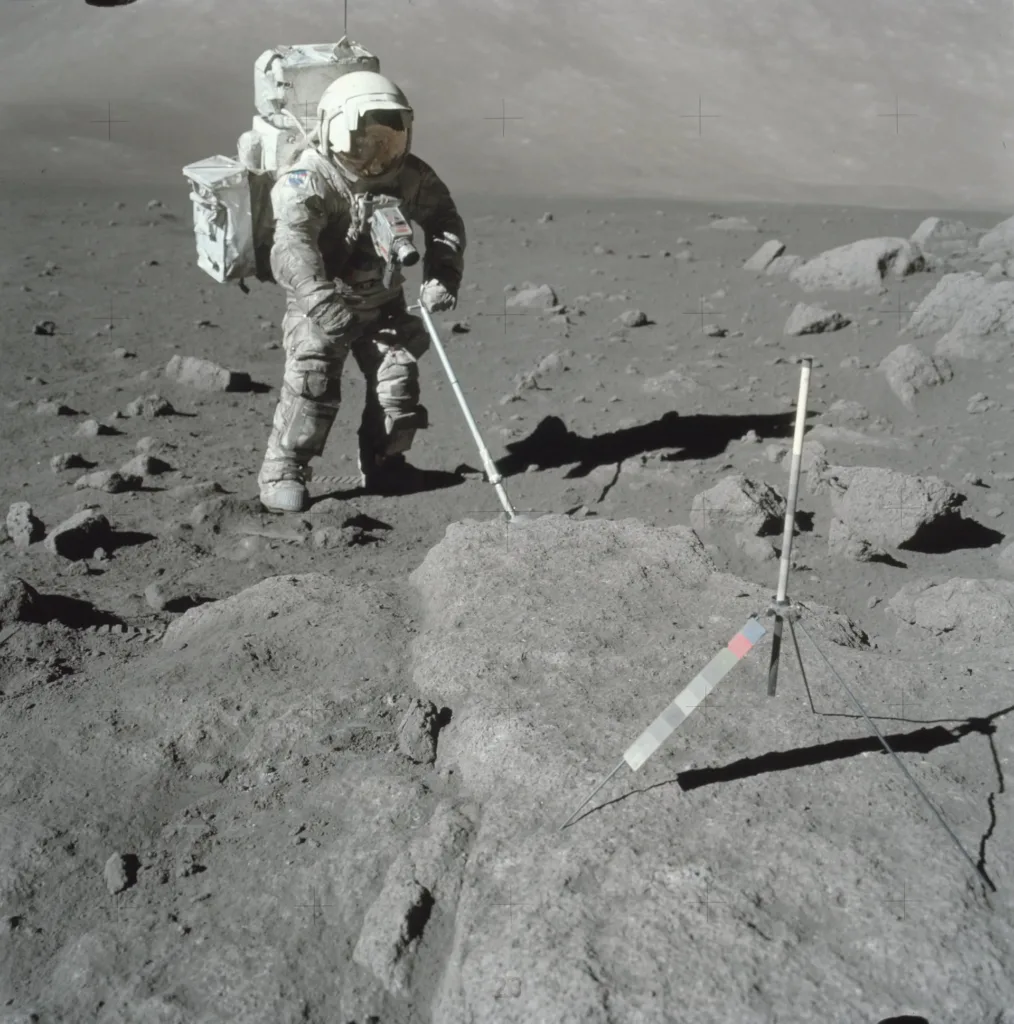Most people interested in space exploration already know lunar dust is an absolute nightmare to deal with. We’re already reported on numerous potential methods for dealing with it, from 3D printing landing pads so we don’t sand blast everything in a given area when a rocket lands, to using liquid nitrogen to push the dust off of clothing. But the fact remains that, for any long-term presence on the Moon, dealing with the dust that resides there is one of the most critical tasks. A new paper from Dr. Slava Turyshev of NASA’s Jet Propulsion Laboratory, who is enough of a polymath that our last article about his research was covering a telescope at the solar gravitational lens, updates our understanding of the physical properties of lunar dust, providing more accurate information that engineers can use to design the next round of rovers and infrastructure to support human expansion to our nearest neighbor.
So why is dust such a problem on the Moon? The Moon doesn’t have a water cycle, whereby the dust on Earth is “worn down” to reasonably benign shapes like oval and spheres. Close inspection of dust molecules on the Moon show that they are jagged and sharp, making them prone to stick to things and to damage them in the process.
Adding to that tendency, Dr. Turyshev notes that the van der Waal’s forces (i.e. the cohesive forces that stick dust together) are up to 100 million times stronger than the lunar gravity. Once the dust attaches to something – whether that’s the outside of a space suit or the inside of a rover’s gear – it is extraordinarily difficult to get off, and, due to its pointiness, extremely damaging to anything it touches.
Fraser discusses fighting Moon Dust with an “elecric shield”
The paper points out other problems with dust, too. It is electrically conductive, meaning that if it gets stuck to an antenna – say one used to communicate with a rover out on a mission, it can dampen (or “attenuate”) the signal, limiting the range the communications system is effective. What’s more, how it does so actually varies based on where the dust originated. In the Moon’s Maria, it acts as a dielectric load, whereas in the Highlands, it acts more as a capacitive “de-tuner” making it more difficult to keep a specific frequency.
Permanently shadowed regions (PSRs) have their own dust-related challenges. Since these are some of the more interesting areas for lunar exploration due to the presence of water ice, understanding how to navigate in them effectively will be critical to any long-term lunar mission. In PSRs, the electrical conductivity of the dust is extremely low, causing electrostatic build-up in any system that rolls through it, or is covered by it. This can cause an electrostatic discharge that can wipe out sensitive electronics if they aren’t designed to be immune to it.
New data from the ChaSTE probe on the Chandrayaan-3 lander show that the thermal conductivity of dust is high enough that it can cause systems to overheat by insulating thermal offloading devices like radiators. However, the Indian mission found that, just a couple of centimeters below the surface, the regolith is much more compacted and conducts heat much better than the fine particles on the surface.
Spraying things with liquid nitrogen could clear the Moon dust off them, as Fraser discusses.
More new data came from the NILS experiment on board the Chang’e-6 lander. It found that solar radiation creates a layer of charged hydrogen ions near the surface on the dayside of the Moon. This layer can directly impact dust transport by modifying the “plasma sheath” that engineers use to account for dust transport. In fact, “electrostatic hopping”, where dust can literally levitate a few feet into the air, is one of the three modes of dust transport discussed in the paper. This typically happens near the terminator line between day and night where the electrical charges are so large they overcome the Moon’s gravity and send dust into thei air.
One of the other transport mechanisms is micrometeoroid eject, which has already been relatively well studied, but it’s important to note that dust from these impacts essentially created a permanent “cloud” of dust floating above the lunar surface. The last transport mechanism is self-inflicted, but also has some new insights in the paper.
When rockets land, they kick up dust in a massive plume around them, essentially sand blasting everything within a few kilometers. Data from the Stereo Cameras for Lunar Plume-Surface STudies (SCALPSS) on the ill-fated Intuitive Machine Odysseus mission shows that the “erosion rate” (i.e. how fast dust is blown away) from rocket plumes is between 4-10 times higher than originally thought. Taking that into account will require rockets to either land farther away from a long-term base, or require the base itself to be designed to withstand even stronger blasts of dust than originally foreseen.
Fraser discusses how big of a problem Moon dust is with Dr. Christine Hartzell.
For now, this is all just useful information for engineers planning our next round of lunar exploration. It might not all be good news, but not all good science is, and it’s better to go into such an important task as the expansion of humanity to other worlds with a clear-eyed understanding than wistfully wishing that things would be easier. Lunar dust is going to be a problem we have to deal with on the Moon – we’re just going to have to accept that.
Learn More:
S. Turyshev – Lunar Dust: Formation, Microphysics, and Transport
UT – NASA is Developing Solutions for Lunar Housekeeping’s Biggest Problem: Dust!
UT – Astronauts Could Clear Lunar Dust Away with Nitrogen Spray

